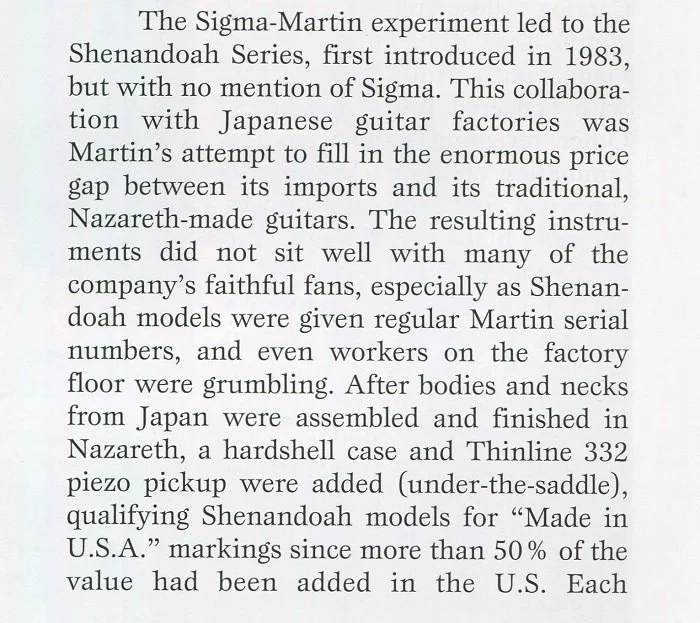Commentary
The true heart of the story starts here
For 150 years, C.F. Martin & Co had built every single guitar they sold under their own name in-house, starting completely from scratch with rough lumber that they sourced from all over the world. While marketplace titans like Lyon & Healy dominated the second half of the 19th Century, and others like Kay and Harmony did the same during the first half of the 20th, Martin stayed relatively small and in the long run had outlasted most of their competitors, even surviving the Great Depression by largely sticking to what they always did best: building comparatively small numbers of exquisitely well-made guitars that were acclaimed in every corner of the globe as the best of their type. Martin’s reputation for high quality had been there from the beginning and that reputation had never been seriously questioned until 1984 - the first year of sales of a line of guitars that were such close (visual) copies of the standard line that they would’ve normally prompted lawsuits. Indeed, lawsuits were very much on the minds of US guitar manufacturers in the 1980’s, due to the increasing number of guitars that were made in Japan that were extremely close copies of iconic American Made instruments. What kept the legal dogs of war at bay in this particular case was that the name on the peghead was apparently identical to that of the company who would otherwise have been the most likely to sue
Apparently….
There are three pics shown above. The stamp on the left can be found inside a brand of guitars that were imported and sold in the United States by C.F. Martin & Co, starting in the early 1970’s. Those guitars were 100% MIJ and that fact was burned into the wood of every back strip, a permanent reminder that Sigma guitars were not “real” Martins, although they looked identical from as close as 5 feet away. The creation and marketing of the Sigma brand in the United States was the very first time C.F. Martin & Co had reluctantly dipped a toe into the uncertain waters of offshore production. It would not be the last. The stamp shown in the pic on the right can be found inside every single C.F. Martin & Co guitar made in the Nazareth PA factory since 1961. The stamp shown in the middle pic can be found inside every Shenandoah guitar made between 1984 and 1992. It is the precise meaning of the word “made” that’s the sticky bit, and one that caused many hard feelings at the time
To an extent, even to this day
Since Martin hasn’t had much at all to say about the Shenandoah guitars since 1993, and their company is an integral part of the discussion, it is only fair that their side of the story be told in full, and without any editing or selective quotes
And that’s about it. As far as is known by the Webmaster, the images above show the only substantial information about the Shenandoah brand that C.F. Martin & Co has officially released since 1993 - the year that the brand was “summarily dropped from the price list”. Somehow that doesn’t sound like a happy ending for an experiment that was started with the best of intentions, and very publicly trumpeted by the sales force at Martin. The advertisements that ran in many major music periodicals between 1984 and 1991 are concrete, easily verifiable evidence that Martin was totally behind this brand in a big way. And then something changed….
© 2008 C.F. Martin & Co
© 2009 C.F. Martin & Co






